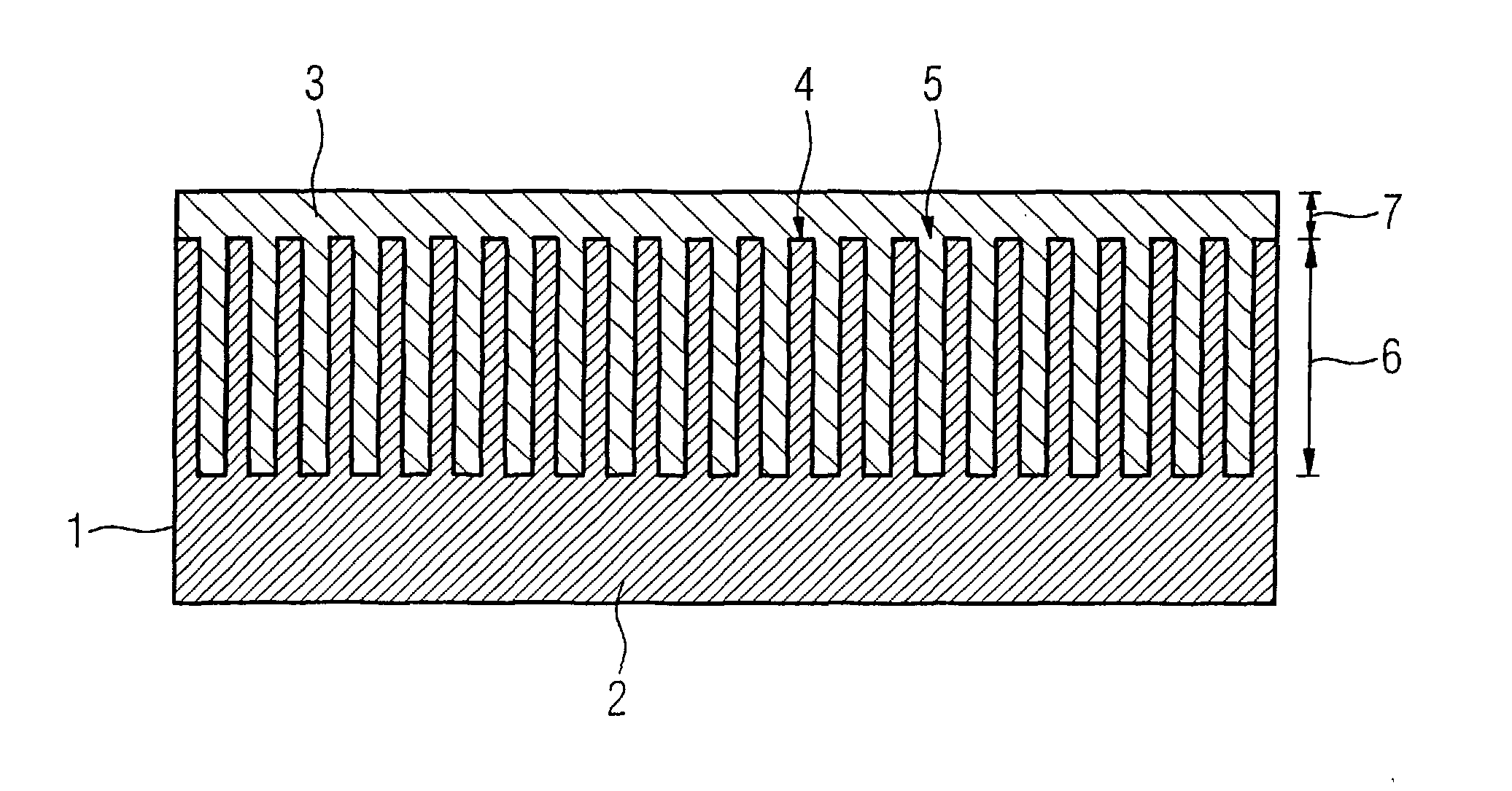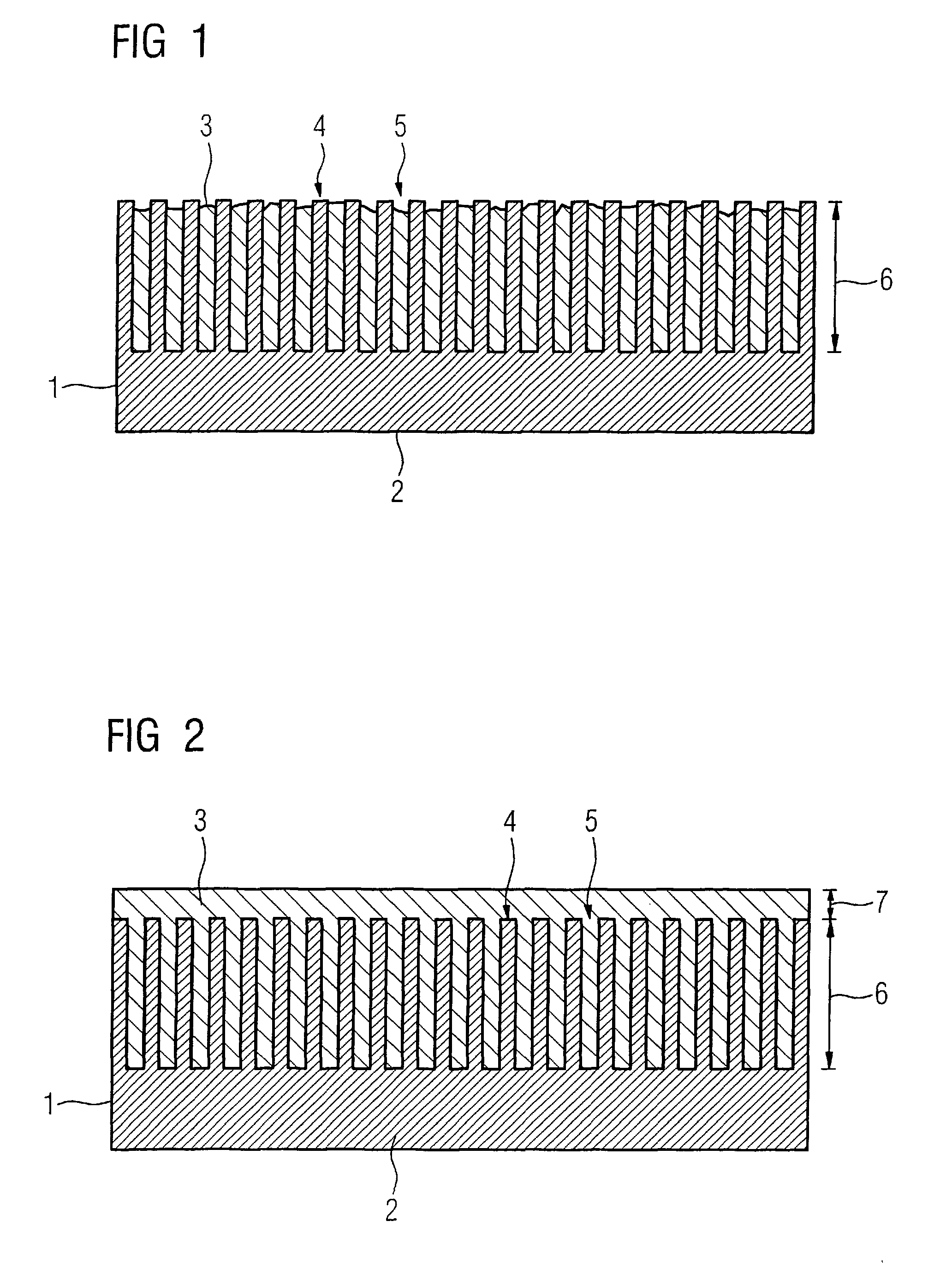X-ray optical grating and method for the production thereof, and X-ray detector embodying same
a technology of optical grating and x-ray, which is applied in the direction of diaphragms for radiation diagnostics, instruments, tomography, etc., can solve the problems of x-ray measurement signal degradation, and achieve the effect of maintaining the quality of the measurement signal
- Summary
- Abstract
- Description
- Claims
- Application Information
AI Technical Summary
Benefits of technology
Problems solved by technology
Method used
Image
Examples
Embodiment Construction
[0023]FIG. 1 shows a conventional x-ray-optical grating 1 that was produced according to the LIGA method. An x-ray-sensitive layer—this is for the most part a plastic such as polymethacrylate, abbreviated as PMMA—is applied on a base plate. A grating structure is subsequently transferred via lithographic exposure with, for example, parallel synchrotron radiation. Exposed and unexposed regions are hereby created, wherein the exposed regions are subsequently dissolved. In the next step, a metal is filled into the grating openings (spacings) by electroplating. In an electrolytic bath, a voltage is thereby applied between the grating and an anode made of the metal to be plated. By electrolysis, metal ions detach from the anode and deposit by reduction on the cathode, to produce the grating. This is continued until a complete negative impression of a grating has been created. With the use of this negative impression, the grating 1 with periodically arranged grating webs 4 and grating gap...
PUM
| Property | Measurement | Unit |
|---|---|---|
| thickness | aaaaa | aaaaa |
| thickness | aaaaa | aaaaa |
| aspect ratio | aaaaa | aaaaa |
Abstract
Description
Claims
Application Information
 Login to View More
Login to View More - R&D
- Intellectual Property
- Life Sciences
- Materials
- Tech Scout
- Unparalleled Data Quality
- Higher Quality Content
- 60% Fewer Hallucinations
Browse by: Latest US Patents, China's latest patents, Technical Efficacy Thesaurus, Application Domain, Technology Topic, Popular Technical Reports.
© 2025 PatSnap. All rights reserved.Legal|Privacy policy|Modern Slavery Act Transparency Statement|Sitemap|About US| Contact US: help@patsnap.com



